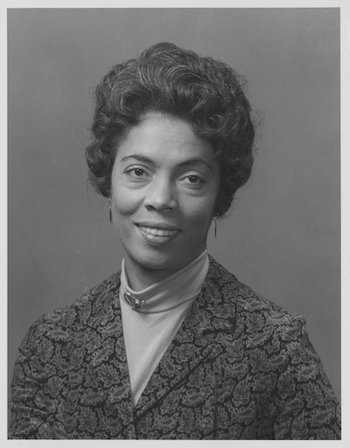This focus of our second blog celebrating Black History Month highlights the contributions of black geoscientists to our community. We recognize that a lack of diversity has plagued the earth sciences throughout its development, yet we know that our practice would be far less advanced without the contributions of these outstanding scientists. Several years ago, Scientific American ran a feature article on four black geoscientists – Dr. John T. Leftwich, Zelma Maine Jackson, Dr. Bernard Hubbard, and Dr. Estella Atekwana - that we bring to your attention[1]. But no celebration of the richness of our earth scientist colleagues would be complete without recognizing and appreciating the work and pursuits of Dr. Marguerite (Thomas) Williams, the first black earth scientist, and the first black woman, in the US to obtain a doctorate in geology[2].
A life driven by a fascination of the natural sciences, and the love of educating youth.
Marguerite Thomas was born on Christmas Eve in 1895 in the Washington DC area. She became fascinated with the natural sciences at a young age to such a degree that it drove her to become a scientist and educator in both the natural and social sciences. She followed her passions through education at what is now known as the University of the District of Columbia, then to Howard University where she earned her undergraduate degree in geology in 1923. While working on her bachelor’s degree at Howard University, she also was an elementary school teacher and followed a life-long passion bringing science education to the younger generations. Once she received her undergraduate degree, she became an assistant professor at the Miner Teachers College in Washington DC and eventually served as the Chairperson of the college’s Division of Geography.
But she was not yet done with her pursuit of scientific truth. Taking a leave of absence from the Miner Teachers College, she pursued her master’s level education at Columbia University, receiving her MS in 1930 and worked closely with Dr. Ernest Everett, himself an influential and highly regarded Black scholar and biologist who pioneered the physiology of development in living cells and the impact of ultraviolet carcinogenic radiation on living cells[3]. Finding a strong interest in the geomorphic characteristics of the Anacostia River Basin, one of the most important watersheds in the Washington DC and Maryland region, she worked diligently on her research topic at Catholic University, while still teaching at Miner Teachers College. Her dissertation on “The Study of the History of Erosion in the Anacostia Drainage Basin” completed in 1942, may be one of the first studies to document the impact of human activities including deforestation and agriculture as primary components that led to excessive flooding and erosion in the watershed. Dr. Marguerite Thomas Williams original map of the Anacostia River in Washington DC and Maryland can bee seen on the Library of Congress’ digital library.[4]
But her love of education may be her greatest gift to the earth sciences practice as she continued to teach as she became a full professor at Miner Teachers College in 1943 and taught at Howard University in the 1940s[5]. She retired from teaching in the mid-1950s.
We stand up and applaud Dr. Marguerite Thomas William’s outstanding service in science and education. She is a trailblazer who opened the door for many by following her passion and also is one whose scientific work should not be lost but instead continually referred to for its scientific vision – a vision that has great meaning today in our world of attempting to understand and mitigate the impact of human development on natural systems.
Sources
[2] Women's History Month - Marguerite Thomas Williams
[3] Ernest Everett Just - Accomplishments, Death & Facts - Biography
[5] Warren, W., 1999. Black women scientists in the United States. Indiana University Press.




